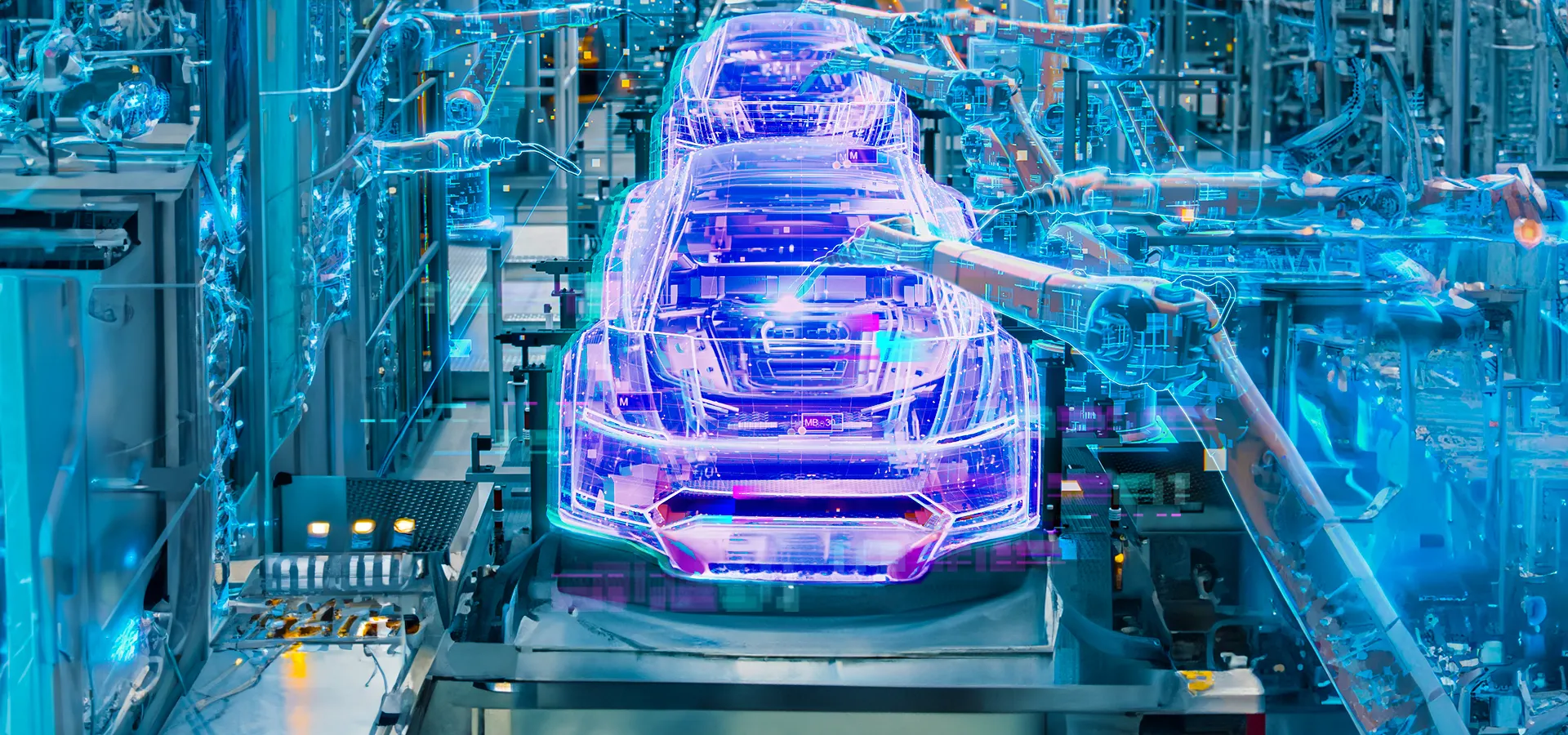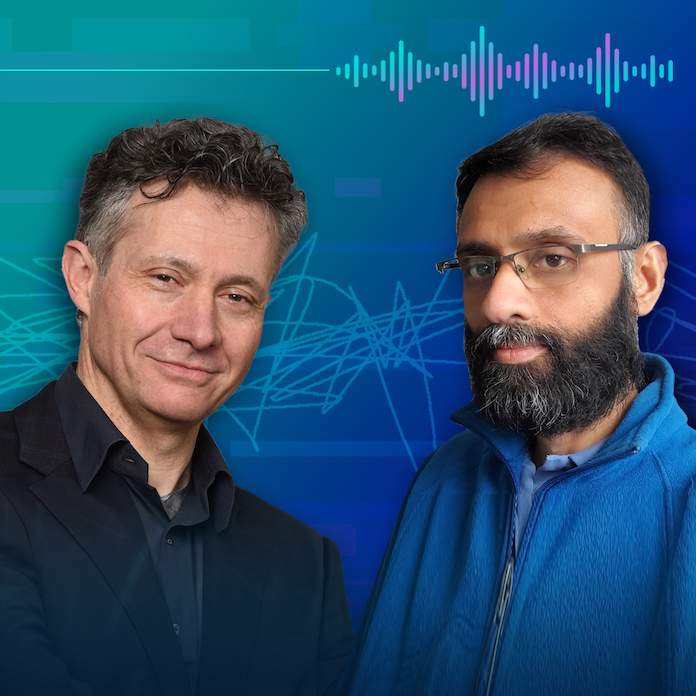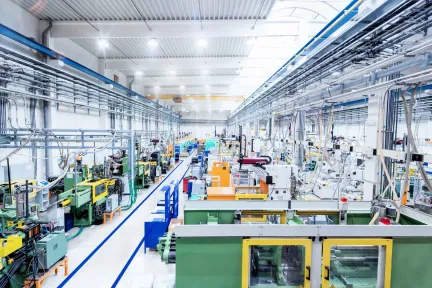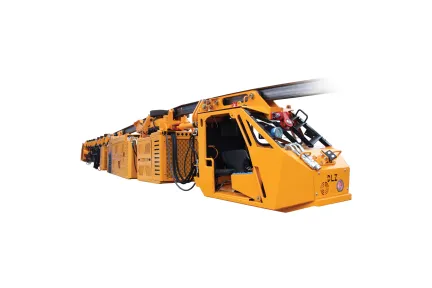#02: How Are Virtual Twins Transforming Sustainability?
Join Philippe Bartissol from Dassault Systèmes and Arvind Krishnan from Lifecycle Insights to learn how customer-specific virtual twins empower industrial equipment companies to improve their field operations efficiency.
Get expert insights on the impact of virtual twins on circular innovation, sustainability and Equipment-as-a-Service (EaaS) models, and what to look forward to from the future of global service activities. Discover more
Meet our speakers
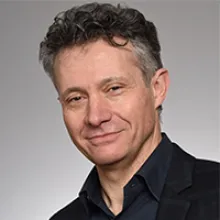
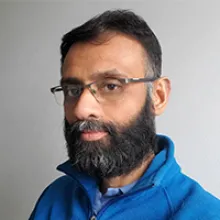
Given the fact that a piece of equipment might be in the field for 10 to 30 years, the biggest impact that we can make on preserving the environment is refurbishing, modernizing or retrofitting these pieces of equipment and machines."
Philippe Bartissol
Read the transcript
Narrator: Welcome back to Disruptors Unleashed, the series that explores the disruptive technologies shaping our world. In our previous episode, we looked at the future of manufacturing with four industry trailblazers: Stéphane Sireau and Florence Verzelen from Dassault Systèmes; David Rowan, founding editor-in-chief of Wired UK; and Paul Armstrong, founder of London-based advisory firm HERE/FORTH.
In this episode, we look at how virtual twins are radically transforming sustainability, with Arvind Krishnan from Lifecycle Insights and Philippe Bartissol from Dassault Systèmes.
Host: Hello, and welcome to this podcast. I'm your host, Arvind Krishnan, a senior industry analyst at Lifecycle Insights. Today, we have with us Mr. Philippe Bartissol to talk about the industrial equipment sector and, most importantly, the impact that the Dassault Systèmes virtual twin experience can make on the companies in this sector.
Philippe: Yes, with pleasure. So, my name is Philippe Bartissol, and I'm the Vice President of the Industrial Equipment Industry at Dassault Systèmes. I joined Dassault Systèmes 12 years ago, after several managerial positions in the industrial equipment industry at a packaging machinery company group. If you look at Dassault Systèmes in terms of industry revenue, industrial equipment is the third industry in terms of revenue.
Philippe: Yeah, so post-COVID, we saw that our customers are switching from something hyper-efficient to much more agility in the value network and the processes. And with this, a better evaluation of the risks and the management of the risks.
Of course, we also have the production of one in the industrial equipment industry – in many segments, on the same production line, you will have a small piece of equipment, then two large ones, then a major one, then three small ones again. So, ad-hoc production is super important.
From a technology standpoint, when it comes to the product itself, we have more self-aware connected systems, making system engineering more important than before in the industrial equipment industry. You know that system engineering comes from the aerospace industry, with AMRs and autonomous mobile robots. You need to have a system view because you must take in all the factors in the navigation and the processes that the autonomous mobile robot will execute.
But the two most important trends we see right now are, of course, circular innovation and sustainability, and EaaS. And when it comes to sustainability, maybe we might not look at the right factors in sustainability globally. Because we all talk about lifecycle assessments – what is my contribution? How much CO2 do I produce when I execute this action or this process?
We are talking about the recyclability of the piece of equipment. But given the fact that the piece of equipment might be in the field for 10, 20 or 30 years, probably the biggest impact that we can make on preserving the environment is refurbishing, modernizing or retrofitting the pieces of equipment and machines, and that is prior to the recyclability.
So, if you look at a DevOps loop, you will go to engineering. You will create the next-generation product. You will manufacture them, sell them, then install the pieces of equipment at the customer's location, and then the customer will experience the use of the equipment and the value he's getting from them.
And for a certain time, he's very happy with the value he is getting, but after a certain time, the value is probably not enough. And either the customer or the machine OEM will advocate for a retrofit, and that retrofit could be for sustainability purposes, for energy-saving purposes or for modernization in terms of IoT capabilities, for example, or control capabilities. It could be not so much now for productivity but better agility in the machine — the machine's ability to produce or transform larger types of products.
Then you go back to engineering – you engineer, you retrofit, you manufacture whatever it needs to manufacture, and then you install the retrofit. And then, after all the months and years of value experiencing, you will ask yourself, either the customer or the machine OEM — do I get the right value or should I retrofit again? Maybe you will do 3, 4 or 5 retrofits in the course of 20 to 30 years.
And maybe, when it comes to the OEM equipment or OEM machine, we should think and design for retrofit because by retrofitting the same piece of equipment several times and not creating a new machine, we will have the best and most positive environmental impact.
And that comes to the last trend, which is EaaS. Right now, probably 99% of the market is the traditional sell and service, meaning the machine OEM will sell a piece of equipment. And then, once it's installed and the site acceptance test or the contractual test has been successfully performed, the equipment is transferred legally to the user, and the 10, 20 or 30 years of the service start with a warranty period.
Most machine OEMs will sell the machine with a very small margin – sometimes no margin at all – and will make more money on the service thereafter. You could count on the service revenue to amount to 20% to 50% in a machine OEM, depending on the segment, but in terms of EBIT, it’s probably doubled. So, probably 40% to 80% or 90% EBIT contribution that the service period or the field period will bring to the machine OEM.
So, in essence, for machine OEM, the EBIT creator and the EBIT engine are in service, and yet, so far, the different divisions were not been working together. The person in charge of service usually does not leverage the assets created in engineering and manufacturing. So, that is the traditional model, which is good in terms of revenue and margin. But it is not very effective because it's a siloed model — you have engineering in a silo and manufacturing in a silo.
Now, engineering and manufacturing are working more and more together, but the service activity is still in a silo mode right now. The new business model that all machine OEMs are looking at, some are testing, but very few are executing at scale, is EaaS, where you lease the piece of equipment.
But to be honest, most machine OEMs do not like to keep the asset on the books. So, usually, they sell the asset to a financial company. And that financial company will then invoice the customer, part-produce or part-transform, so, pull output. So, it's an outcome-based invoicing from this financial company that might be created as a special purpose vehicle just to hold the assets of a certain plant to the line owner.
And in that case, this is being experimented — it’s already the case for some compressor businesses. And it's being experimented by a lot of machine OEMs right now. And what it does is gluing or bringing the interests of the line user, the machine OEM and the special purpose vehicle or the specially created financial company together — they all have the same interest, which is the machine OEE in the field. The OEE stands for overall equipment efficiency. So, everybody's interest is aligned alongside the utilization of the piece of equipment in the field.
Philippe: Let's look at the different facets of a twin. Before putting something in operation — imagine I'm working for a machine OEM, and I'm reflecting on my next product generation. Then, I need to go to the market, investigate, get a number of requirements, look at the range of products I want to address and all the other related requirements.
And then, from a system of systems viewpoint, I start the design and the simulation, or ‘Mod/Sim’ as we call it — modeling and simulation almost at the same time. I will then work on the manufacturability of my next product generation. And I will work on the serviceability and especially, the retrofitability of that future range of equipment that I'm about to put on the market. And then, in the end, I will work on recyclability.
Right now, to be honest, our machine customers, they're not so much working on the serviceability and the retrofitability. Since five, seven years ago, they started working quite well on the manufacturability during new product development or new product introduction, and PDO and DI, but we need to guide them towards serviceability and retrofitability.
So, what we did at the Dassault Systèmes is that we introduced a new item in the 3DEXPERIENCE® platform, which is a service item, which is, at the same time, a CAD view and a BOM view. You can use this service item together with the notion of consumables, spare parts, spare parts kits, mean time between failure (MTBF) and mean time to repair (MTTR) for the spare parts and document this during NPD or NPI, forcing the development engineers who do not like to do so, but it's really within the interest of the machine OEM. If you manage to force them to document this and work on it, then you have prepared the ground for the service time for 20 to 30 years of the machine in operation thereafter.
So, you have your engineering twin — when you do new product development, you might have a sales twin or sales virtual twin. When you do, you might have, before, a marketing twin, which is a generic one. The engineering twin is also generic, as at that time, you’re not developing a complete range of products, you're not developing for a given customer, you’re not doing ETO and you’re not developing the whole range.
And then, you put it on the market, and you start quoting. The minute you start quoting, the twin you quote becomes a specific twin because it is for that customer, that customer needs at that customer location. And hopefully, you will be successful. You will modify your quote 5, 6 or 7 times and have a heat rate of 10 to 20%.
And let's say you were successful; you get a purchase order. Then, at that time, our customers asked us for a specific twin, a specific manufacturing twin and a specific engineering twin per machine ordered until installation.
After that, they will ask us, on the 3DEXPERIENCE platform, to provide them with the field twin of that piece of equipment as it has just been installed in the field. And that field twin or that virtual twin in operation will have two views — an engineering view and a service view.
Why so? Because in case of technical issues, you might have to go back to the engineering view. Service view, of course, because you will execute your maintenance program, which is regular and could be preventive or predictive. Then, from time to time, you will propose retrofits, as we were discussing before, in order to extend the life of the machine — potentially to repurpose the machine. But usually, it's to extend the life of the machine, augmenting the value and fitting the machine for another three, four or five years of life on the ground.
That virtual twin in operation, which is, at the same time, engineering and manufacturing with a 3D view, you will project all the events that are taking place on the field to that machine onto the twin.
Think about it — maybe 15 or 20 years ago, we switched to engineering when we did engineering reviews from 2D to 3D. And really, the reviews are around the 3D. I mean, you're projecting the 3D — whether you are in Los Angeles, in Rome or Shanghai, everybody's looking at the same thing. Why can't this be possible for the service activities?
And now that our customers are asking and that the platform editors are proposing specific twins for machines in operation, we are starting to populate the 3DEXPERIENCE platform with these specific twins. They will be able to do reviews for services around that 3D twin, which will contain the engineering aspect, the service view, the retrofit, the maintenance, work instructions, the maintenance processes and the retrofit possibilities.
And you can project what is happening. For example, when you have an issue or a customer claim, you might annotate the 3D twin in the field directly and just look at it. It will be used for 10 to 30 years, whereas in engineering, it's only a period of 4 or 5 years or the quoting time is 6 months. Manufacturing time might be six months to a year.
So, here, it’s really the largest timeframe, and in my eyes, this will become the most used industrial metaverse, if you will, but not a gaming metaverse — it’s a metaverse that is there for a purpose, which everybody that has a stake in the machine or overall equipment efficiency (OEE) will gather around and will contribute to.
Now, that often has a caveat. And the caveat is this: If I'm a field technician, for example, I'm preparing my next mission. I'm based in Spain, and I have a need to go to a machine in Portugal. Prior to packing my suitcase, I will study the twin, study everything that happened, potentially collaborate with a first level of service or some engineering guys around the twin, get the right spare parts with me, the right work instructions and go there. This will allow me to do my job much quicker. Remember — I’m a field technician. So, I'm representing the machine OEM, but my workspace is at my customer plant, so I'm operating right in front of the customer.
So, this is quality perceived: What I'm doing will set the tone for how the customer will perceive my company because the sales guys are selling this, the first machine. But the service guys or the field technicians will sell the second, the third and the fourth or the retrofit of the installed ones. I do what I have to do much quicker, with the perceived quality that will be enhanced in the eyes of the customer, and then I go back home.
But then, somebody has to update the virtual twin in operation because if nobody does, the next technicians who will have to go there in two months’ time will get the wrong information. He will come with the wrong parts and work instructions, and then we will have the traditional way of working — which is through the phone and some photos. It will take hours and the technician will have to come back.
So, we would have to sit down with our customers and really study with them, in which case they want to update the virtual twin in operation and in which case they do not. So, who does it? Is it the field technicians? Is it the first level of services? All this has to be discussed. And you see that it's a question of offer and demand. The offer is there.
We are proposing this right now. Our customers are requesting this; it’s what we are seeing in the request for quotation (RFQ) that our customers send when they want updates to reflect on the next PLM or product platform for the next 10 to 15 years. You have to service items and BOMs. And they are asking the editors to enable them to produce and create these specific virtual twins in operation per machine created.
So, it's going to be a whole new world, where the ways of working in engineering will apply to service. It will take some time, but the technology is there and the offer is there. It's possible right now and the most advanced customers want it right now. It will entice some change in the management and the roles and responsibilities of all the parties that are taking part in the relevant OEE of the machine.
From a sustainability standpoint, all parties have the same interest: That production line or that piece of equipment has to be used as much as possible — the customer doesn't have to buy a new piece of equipment as they frequently use what is already existing, which is exactly what you and I, and most of the people that are listening to us today, are doing in their private life. They are starting to favor, reuse or buy either clothes or objects that have been already used rather than buying completely new ones.
Arvind: Absolutely, Philipe. I think there is a renaissance for the circular use of things. And it's interesting to note that industrial equipment, common people don't think of those things as something that can be reused, repurposed and repackaged. Can I salvage materials and use them to do something else?
I think the ability of your virtual twin on the platform just opens up a plethora of opportunities that people haven't conceived today. And I think that the possibility is the biggest takeaway from here.
Philippe: Absolutely. Compared to a virtual training operation, you will be able to compare the actual virtual twin of new machines that you would sell today to the twin of the machine that has been installed. By comparing this, opportunities for retrofits will come immediately. Right now, this is a very cumbersome process because the machine OEMs have an installed base somewhere in the ERP, and they usually have an EBOM. That EBOM is usually not up to date. So, they do not have what is needed to do a proper scanning of all the sales opportunities for retrofits.
With a virtual twin in operation that compares this to the twin of the machine, they would be able to sell a machine today. And looking at the differences, they will be able to come up with campaigns and retrofits. Also, when you propose the software, you will propose the offer in 3D rather than just paper and a bunch of numbers.
Arvind: Excellent point, Philippe. I can really see how not only those retrofits are being proposed, but at the same time, the ROI for those retrofits, where the decision maker needs to do those things, can be available on demand, either by the person who's doing the service or by the salespeople who are in communication with the customer. And the whole thing in 3D with the existing machine gives the customer a real idea of “Do I have the space to do that?” and “Does it even make sense in my context to do that?”
So, it really personalizes and contextualizes the offer for our customers.
Philippe: If we go one step further, you could imagine that the customer will want to have that twin as well. But something strange is happening: The line user, the machine user or the purchasing guy is purchasing a piece of mechatronic equipment — he knows how to purchase spare parts, services, installation and warranty, but he very seldom requires access to the twin. And the machine OEM, on its side, doesn't want to give away the twin because it's very precious. This is IP.
We have the capability on the 3DEXPERIENCE platform, with our brands on the 3DEXPERIENCE site, to simplify and beautify the twin, and you can choose how much you want to simplify.
It might be that the machine OEM or the line builder is comfortable enough with a level of simplification that he is okay to sell or rent the twin itself. And by the way, in the case of equipment as a system, of course, that virtual training operation is super interesting with the current business model where you sell and then, you service. But with EaaS, it's not just useful – it's a prerequisite. It's a prerequisite of that paper-part model.
As a machine OEM, you have much more take to the machine’s performance. So, you absolutely need that twin and you need to keep that twin updated. So again, this virtual twin updating mechanism needs to be worked out and needs to be reflected upon.
Arvind: Well, it's a very interesting point that you brought out, Philippe — that for the EaaS model to even work, having some sort of virtual twin for every machine that you sold is not just a nice thing to have.
But certainly, you will not be able to do business without that. So, I guess that's something that executives have to take note of — that they need to have some sort of virtual twin of every machine that they sell and keep monitoring them, and they can probably get all data associated with that virtual twin to pass it in operation because you might foresee some things that the operator may not foresee. And it is in your best interest to go ahead and get that thing done.
Otherwise, maybe three months down the line, you're going to have a big disruption in terms of the usage of the machine. And that could lead to impacts on your revenues because you had some service-level promises that you need to uphold.
Philippe: Arvind, you pointed out exactly the difference between an EBOM and the virtual twin; you can simulate the virtual twin, and you can simulate the future with ‘what if’ scenarios.
What if the machine's water consumption differs or the water source is different than the quality of the water? Or what if I have a very short electricity cut?
You will be able to simulate your specific twin — every specific twin. So, you might think that it will cost some money to entertain a twin piece of equipment, but think about 15 years ago, when we thought about IoT and small objects — when people were writing 15, 20 years ago, saying, “In the future, every object, even the smallest ones will be connected.”
People laughed. Well, I believe that for large machines, already today, most advanced customers will want specific twins. For smaller pieces of equipment, it will come. And I would even guess that for cars, it will come as well because there's a whole business model around it. So, probably, we might see an industry of specific twins in operation in the future to which you will be able to connect the IoT data. In a similar way, we saw the wave of connectivity for even smaller objects 15 to 20 years ago.
Arvind: So, Philippe, thank you again for this engaging discussion. You know, I'm very certain that the engineering executives who are hearing this podcast will get some new ideas and can certainly benefit from the insights that you shared with us – they might embark on a strategy to incorporate virtual twin experiences for their particular operations. So, thank you again, and have a nice day.
Philippe: Thank you very much, Arvind. Have a nice day, and this is a completely new era for the service activities worldwide.
Narrator: Disruptors Unleashed is produced by Dassault Systèmes. For more episodes, follow us on Apple Podcasts, Spotify, Deezer, or your nearest streaming platforms. To learn more about Dassault Systèmes, visit us at 3ds.com.
